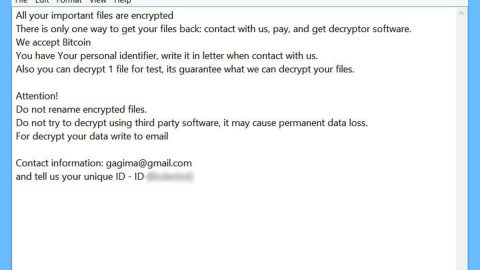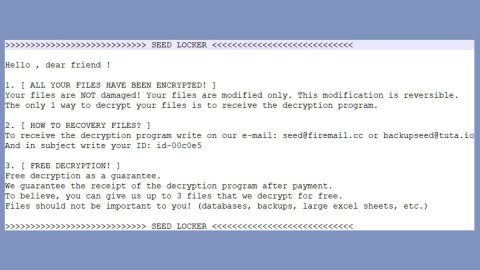
These days, computer crashes and slowdowns happen recurrently with the application getting hardware intensive. Windows came up with a useful built-in tool called Resource Monitor also known as “Resmon”, to deal with these kinds of problems as well as monitor hardware resources. You might know the features this program offers and how it could help you monitor hardware resources efficiently on your computer if you have been using this program for some time now. However, as of late, some users reported getting some problems with their Resource Monitor. If you are one of the users having problems with Resource Monitor, then this article will help you sort the problem out. If you are facing some issues with Resource Monitor, you may notice that it is not responding or that it’s transparent, blank or empty.
To fix the problem, follow the instructions provided below.
Option #1 – Try to run Resource Monitor manually. This is the first thing you can try to fix the problem especially if you find that you can’t access Resource Monitor on your computer.
To do so, tap Win + R keys from your keyboard and type in resmon.exe to open Resource Monitor. Or you could also navigate to “C:\Windows\System32” where you should find a file named resmon.exe, click on it to open Resource Monitor.
Option #2 – If option #1 didn’t work out as expected, you can try to fix the problem by switching back to the Aero theme if you are using any other theme than Windows Aero theme. Once you switch it back, check Resource Monitor. If this fixes the problem then you might have to switch back your themes whenever you want to use Resource Monitor, however if it is still not working, refer to the following options.
Option #3 – You can try to change your DPI settings. To do so, right click on an empty section on your desktop and then select “Display Settings”. After that, try to adjust the percentage under “Scale and Layout” and see if it fixes the problem with Resource Monitor.

Option #4 – If option #3 did not fix the problem, you can try to troubleshoot the problem in Clean Boot State. Clean Boot is a system state where Windows only loads a minimal set of drivers and services. To put your computer in a Clean Boot State, refer to these steps:
- Type in msconfig in the Start Search to open the System Configuration utility.
- From there, go to the General tab and click “Selective startup”.
- Clear the “Load Startup items” check box and make sure that the “Load System Services” and “Use Original boot configuration” options are checked.
- Next, click the Services tab and select “Hide All Microsoft Services” check box.
- Click Disable all.
- Click on Apply/OK and restart your PC. (This will put your PC into a Clean Boot State. And to configure Windows to use the usual startup, just simply undo the changes.)
After you’ve put your computer into Clean Boot State, try to run the Resource Monitor again. If you are able to run it, then it means that there is some service or driver interfering with the Resource Monitor – you’ll have to find it to isolate the problem.
Option #5 – Try to create a new local administrator account on your Windows 10 PC if nothing still works then check if the Resource Monitor works on the new user account you just created. If it ended up working on the new user account, chances are the problem was with your very own user account profile. To fix this, you have to delete the existing account in to the new user account using your Microsoft credentials, but before you do, you have to backup your data first.
Option #6 – Try to uninstall any recent updates from your computer. This helps if you have recently discovered the issue in your computer and you suspect that it might have something to do with a recent update you just installed.

To start, open Settings and then proceed to “Update and Security” and on this page, click on the “View installed update history” option. After that, click Uninstall Update – doing so would open a list of recent updates that can be uninstalled. Try to uninstall any recent updates you suspect that might be the culprit then check if Resource Monitor is now working.
Option #7 – Check if your copy of Windows has some corrupted files or not. To do so, you can use Windows’ built-in tool known as “System File Checker” which scans your system for any corrupted files and automatically repairs them.
- Tap Win + R to launch Run.
- Type in cmd in the field and tap Enter.
- After opening Command Prompt, type in sfc /scannow

The command will start a system scan which will take a few while before it finishes. Once it’s done, you could get the following results:
- Windows Resource Protection did not find any integrity violations.
- Windows Resource Protection found corrupt files and successfully repaired them.
- Windows Resource Protection found corrupt files but was unable to fix some of them.
Option #8 – If the System File Checker wasn’t able to fix corrupted files in your system which is very unlikely you can try the DISM tool to repair the Windows image file.
To use the DISM Tool, follow these steps:
- Tap Win + R keys to launch Run.
- Type in cmd and tap Enter to open Command Prompt with administrator privileges or you could also search for cmd in the Taskbar search box, right click on the Command Prompt option and select Run as administrator
- After opening the Command Prompt as admin, type in or simply copy and paste the following command:
DISM /Online /Cleanup-Image /CheckHealth
If nothing really works, there is a one-click solution you could check out. This program is a useful tool that could repair corrupted registries and optimize your PC’s overall performance. Aside from that, it also cleans out your computer for any junk or corrupted files that help you eliminate any unwanted files from your system. This is basically a solution that’s within your grasp with just a click. It’s easy to use as it is user-friendly. For complete set of instructions in downloading and using it, refer to the steps below.
Perform a full system scan using PC Cleaner Pro. To do so, follow the instructions below.
- Turn on your computer. If it’s already on, you have to reboot
- After that, the BIOSscreen will be displayed, but if Windows pops up instead, reboot your computer and try again. Once you’re on the BIOS screen, repeat pressing F8, by doing so the Advanced Option shows up.
- To navigate the Advanced Optionuse the arrow keys and select Safe Mode with Networking then hit
- Windows will now load the SafeMode with Networking.
- Press and hold both R key and Windows key.
- If done correctly, the Windows Run Boxwill show up.
- Type in explorer http://www.fixmypcfree.com/install/pccleanerpro
A single space must be in between explorer and http. Click OK.
- A dialog box will be displayed by Internet Explorer. Click Run to begin downloading PC Cleaner Pro. Installation will start automatically once download is done.
- Click OK to launch PC Cleaner Pro.
- Run the program and click the Click to Start Scanbutton to perform a full system scan.
- After all the infections are identified, click FIX ALL.
















